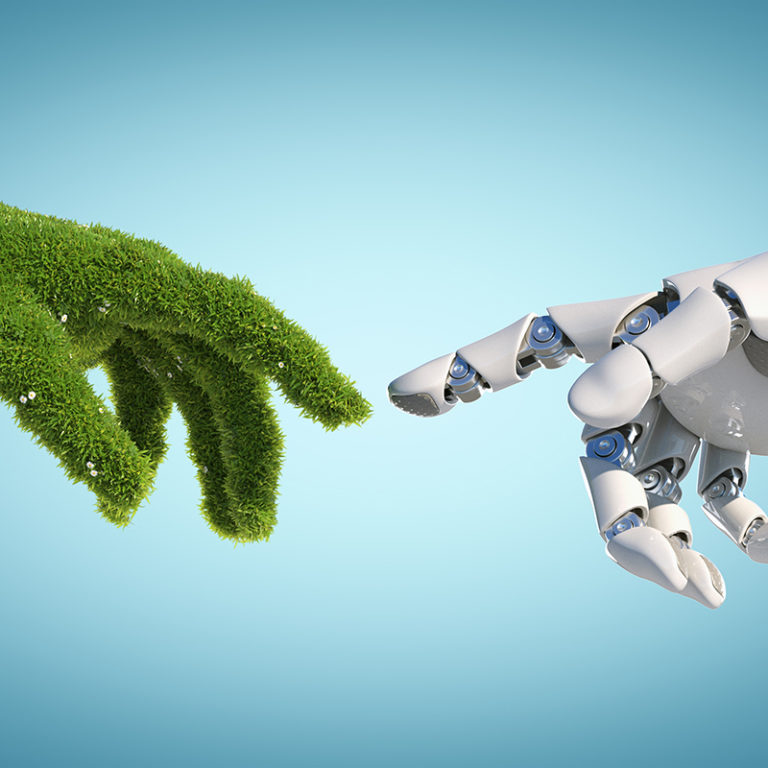July 9, 2021- Technology,
The Future of Work: Tech Trends That Will Define The Next Decade

Technology is taking over, and for most people, it seems we have reached the point where there is no turning back. There is no option of living without it if we want to be part of our society. So, let’s just embrace the change and use technology for our advancement; we use it as a tool instead of as a threat. These are the technological trends that will define our world in the next decade.
Artificial Intelligence
The idea of Artificial Intelligence (AI) has been in our minds for a while. But just these last few years, it has reached some of its potential. Scientists and engineers already manage to design machines that can learn to some degree, which is far from an artificial human consciousness.
However, AI is already changing the world that we live in today. It is not only rapidly developing, but it’s powering the development of other technologies. AI algorithms can’t yet reproduce all the processes of the human mind, but the few it can do, it does it much better than a human. So, if technologies were growing fast before, now with AI, the possibilities are endless.
The Future of Work: Tech Trends That Will Define The Next Decade
Technology is taking over, and for most people, it seems we have reached the point where there is no turning back. There is no option of living without it if we want to be part of our society. So, let’s just embrace the change and use technology for our advancement; we use it as a tool instead of as a threat. These are the technological trends that will define our world in the next decade.
Artificial Intelligence
The idea of Artificial Intelligence (AI) has been in our minds for a while. But just these last few years, it has reached some of its potential. Scientists and engineers already manage to design machines that can learn to some degree, which is far from an artificial human consciousness.
However, AI is already changing the world that we live in today. It is not only rapidly developing, but it’s powering the development of other technologies. AI algorithms can’t yet reproduce all the processes of the human mind, but the few it can do, it does it much better than a human. So, if technologies were growing fast before, now with AI, the possibilities are endless.
It is a possibility that by the end of this decade, machines will be able to pass the Turing test. In fact, Ray Kurzweil believes that by 2045 AI will surpass human intelligence. It is a little frightening for sure, but like any other tech, we should see AI as a tool to enhance humans.
Big Data
Big Data is the millions of data that is collected digitally through different devices and tech. Companies have always been able to receive information from their customers, employees, clients, and more, but it was so much they couldn’t take advantage of it. This data only increased with the introduction of the Internet and later computers and smartphones.
Today, with the use of complex analytics and AI algorithms, companies can generate insights from this data. Computers analyze all the information in seconds and provide results, something that a human would take years to do. So, Big Data has been fueled by the creation of different AI algorithms that help create software able to analyze tons of data that before was going to waste.
This technology is especially powerful in the marketing industry. All companies with digital platforms use it; sites like Facebook or Youtube use Big Data to create profiles of its users and make their experience more enjoyable. But it has many other applications, and with the advancements in AI, it will continue to grow.
Edge Computing
Many people own at least one personal computer at home, and this means they own the hardware of the device. But the way tech companies have designed their service so that most people use their computers just to access the cloud. People use G Suite, Office 365, Gmail, Outlook, Dropbox, and other cloud services. So the computing power of personal computers isn’t essential, at least for day to day activities.
And even though digital services aren’t centralized, cloud services are controlled by just a few companies. Microsoft, Google, Amazon and IBM are the companies that offer cloud as a service, so all the cloud is stored in the servers of these companies. This doesn’t leave much room for improvement.
Edge computing is looking for a way to change this. The idea is that companies will start making devices that can do most of the processes locally and leave the cloud just for support. The word “edge” is used to define a device that won’t have to depend on computing power that is miles away; instead, all the processes will be done on the edge.
For example, some companies are thinking of installing servers on people’s homes for all the devices inside the house. Google is thinking of creating offline modes for websites where people can do basic operations and save it to sync when the device connects to the Internet again. Edge computing will lessen the latency as well as improve security and the user experience.
Digital Twins
A digital twin is a digital portrayal of an object, process or service. A digital twin allows us to monitor and analyze what is happening in real life, and it can collect data for making predictions. It can also be used to create simulations and develop new opportunities.
In a factory, it could make the work of many professionals easier, especially for the product manager. Digital twins have many applications in manufacturing, IoT, and even aerospace, and with more tech taking over our lives, it will only become more necessary.
Quantum Computing
Computers, as we know them today, are reaching their maximum potential. But the new technological developments demand more computing power, and quantum computing is one of the options. This technology relies on the properties of quantum mechanics to transmit information for one point to another.
Today’s computers use bits to manipulate information, and this means they see everything in terms of binary states 0 and 1. Let’s say I have a coin; if it’s heads, then its state is 1, and if it’s tails, its state is 0. Now a computer has no problem identifying if the coin is in one of these two states, but what happens when the coin is spinning? Any ordinary computer will probably crash.
However, quantum computers and quantum mechanics allow us to identify if the coin is spinning thanks to the properties of superposition, entanglement and interference. It sounds complicated, but the important part is that quantum computers will allow us to tackle problems that cannot be resolved with the machines we have today.
Nanotechnology
Nanotechnology is the development of tech at a nanoscale. It allows manipulating materials at the most basic structures and has fueled many scientific discoveries. It has applications in many industries, like manufacturing and oil and gas. The potential for nanotechnology is vast, and some people speculate that it could even be used for creating superhumans that can connect their brain to the cloud.
Written by Artur Meyster: the CTO of Career Karma (YC W19), an online marketplace that matches career switchers with coding bootcamps. He is also the host of the Breaking Into Startups podcast, which features people with non-traditional backgrounds who broke into tech.
Recent Posts
Bud Sprout Bloom Launches Affirmation Cards for Kids
TORONTO, Ontario – Oct. 21, 2020: Toronto mom
The Future of Work: Tech Trends That Will Define The Next Decade
Technology is taking over, and for most people, it seems we have reached th
Logo Design: Expectations vs Reality
If you are considering designing a logo for your company, or want to upgrad

